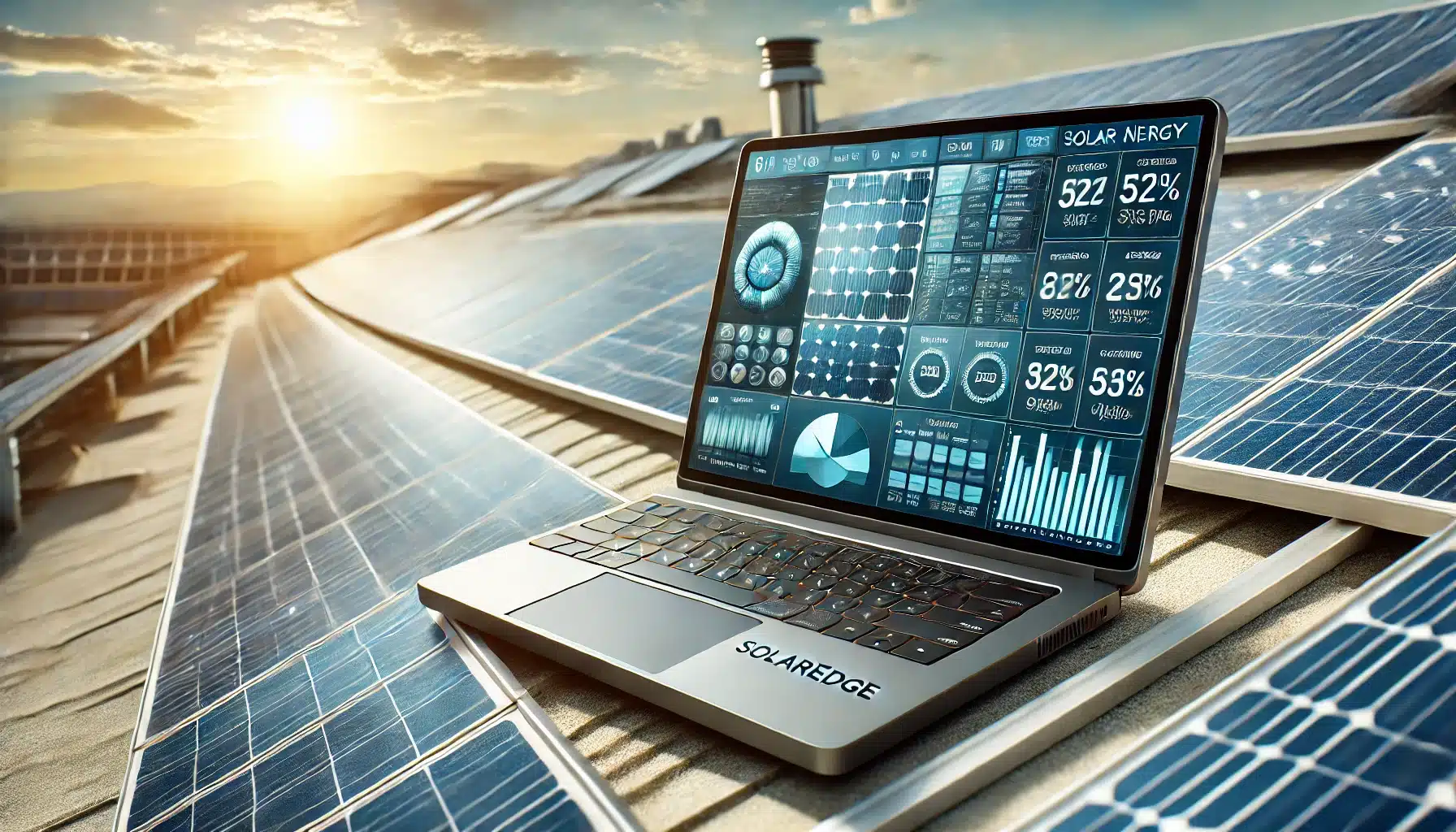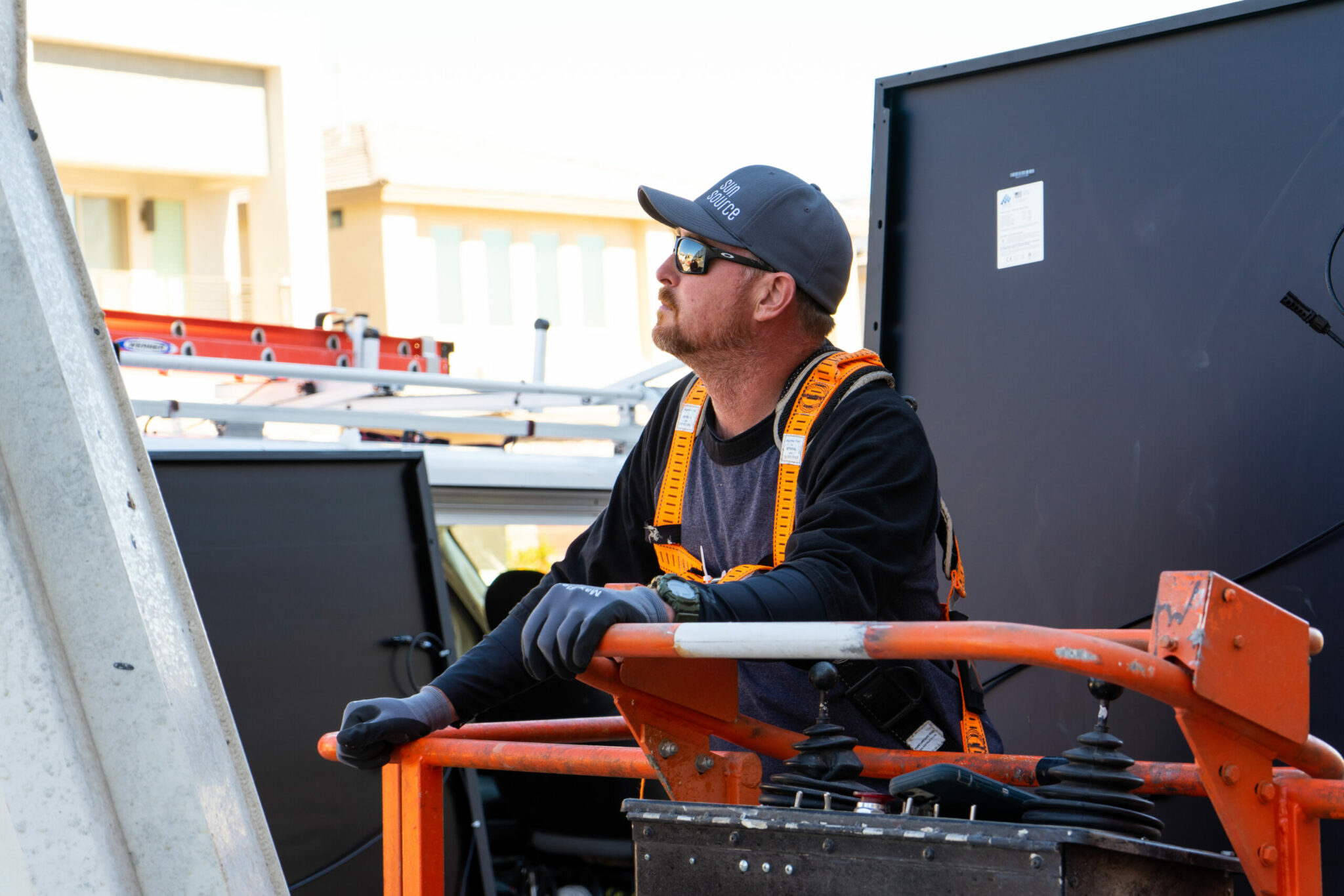Key Takeaways
- Solar panel monitoring systems track and analyze energy production and consumption, providing real-time updates and detecting potential issues to maintain optimal efficiency.
- Different types of solar monitoring systems include manufacturer-integrated solutions, installer-provided solutions, and third-party systems, each offering unique features and compatibility considerations.
- Key features to look for in solar monitoring systems are real-time data reporting, module-level monitoring, and alerts/notifications, which help users optimize their solar power production and manage energy consumption effectively.
Understanding Solar Panel Monitoring Systems
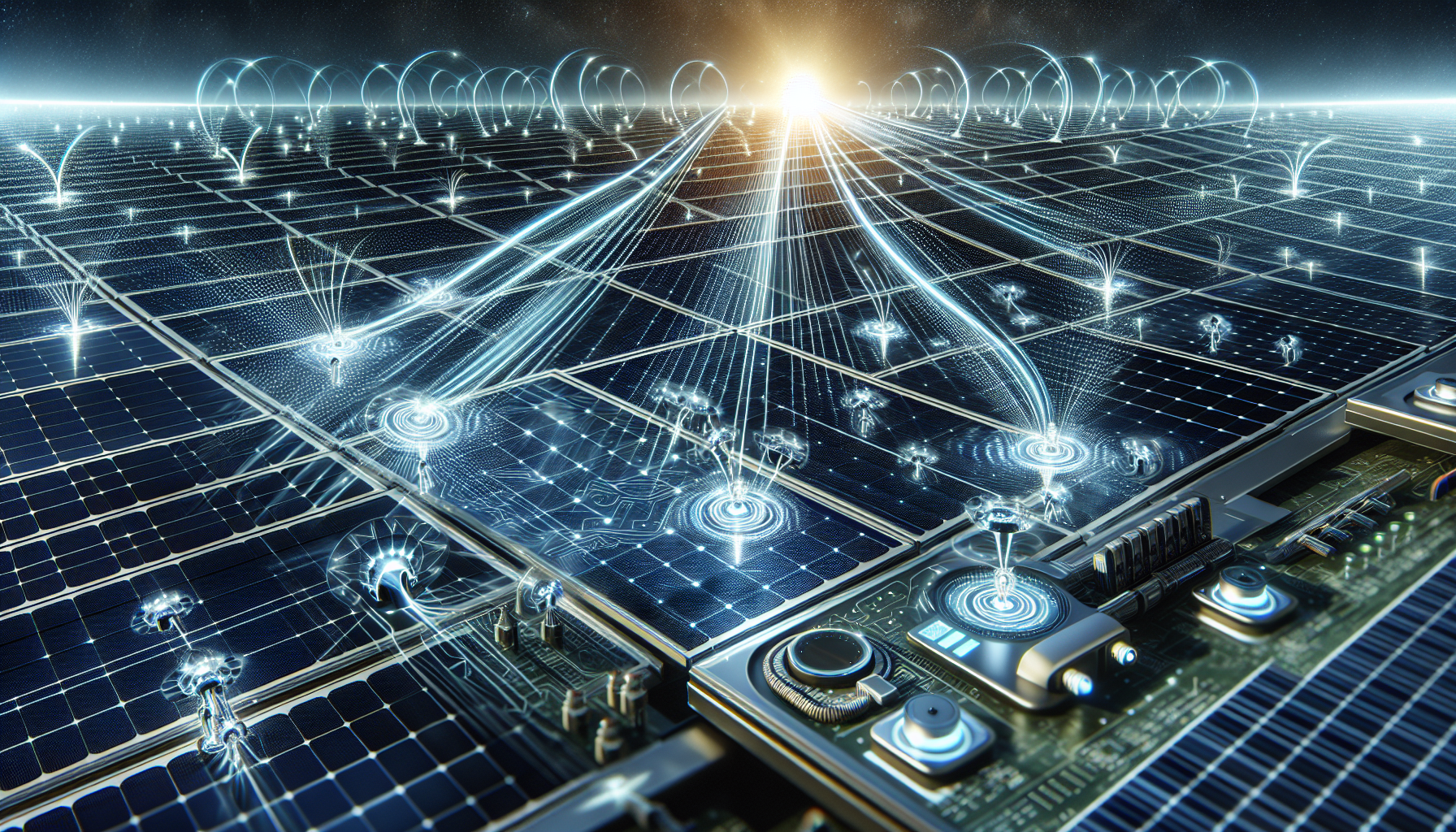
The primary function of solar panel monitoring systems is to:
- Track and analyze energy production and consumption
- Keep your solar array working at its maximum efficiency
- Collect crucial data from the solar inverters or charge controllers
- Translate power levels into actionable insights
- Deliver real-time updates and detailed metrics
- Aid in managing electricity usage
- Spot potential issues before they worsen
The significance of these monitoring systems is paramount. They not only ensure that your solar panels are working correctly but also alert you to any problems or defects, minimizing downtime and maintenance costs. With a centralized platform, users can access custom reports and detailed performance data, making it easier to optimize their solar power production and consumption.
How Solar Monitoring Systems Work
Solar monitoring systems are centered around sensors and communication devices. These components are attached to solar arrays to continuously track their performance. These sensors track production data from each panel, including voltage, current, and power output, and then transmit this information to a cloud-based platform. Whether integrated into the inverter or installed as standalone devices, these sensors ensure that you have a detailed understanding of your system’s performance at any given time.
Constant tracking of energy production and consumption is made possible by the pivotal component of real-time monitoring. This constant flow of data enables the system to:
- Detect and alert users to dips in output or issues with individual panels, batteries, or other components
- Provide real-time insights that are invaluable in both grid-tied and off-grid systems
- Ensure that any problems can be addressed promptly to maintain optimal performance
Types of Solar Monitoring Systems
Solar monitoring systems are available in a variety of forms, each endowed with unique features and compatibility considerations. Manufacturer-integrated solutions are often built into solar panels or inverters, providing seamless integration and easy-to-read results via a website or mobile app. These solutions are typically tied to specific inverter brands but can work with multiple solar panel brands, making them a versatile choice for many installations.
Installer-provided solutions, on the other hand, are often integrated into the solar inverters and provided by the solar installation company. Additionally, third-party monitoring systems offer comprehensive tracking of whole-home energy consumption, not just solar production. These systems can be particularly useful for legacy solar systems, as they use current transformers (CTs) to measure production.
Key Features to Look for in a Solar Monitoring System

When selecting a solar monitoring system, certain key features can greatly influence its usability and effectiveness. Real-time data reporting is essential, as it allows for immediate insights into the system’s performance and enables prompt action in case of any issues. Module-level monitoring is another critical feature, as it helps identify and resolve problems at the individual panel level, reducing troubleshooting time and costs.
Alerts and notifications are also vital components of a robust solar monitoring system. These features ensure that users are promptly informed of any system malfunctions, declining power production, or adverse weather conditions that could impact performance. By incorporating these features, a solar monitoring system can provide comprehensive and actionable insights to maintain optimal efficiency.
Real-Time Data Reporting
Real-time data reporting forms the backbone of effective solar monitoring systems. By providing continuous updates on system performance, users can quickly identify and address any issues, minimizing downtime and maximizing efficiency. Wi-Fi connectivity plays a crucial role in this process, enabling remote monitoring from virtually anywhere, whether through a mobile app or an online platform.
The ability to access real-time data allows homeowners to:
- Monitor power production rates
- Track daily energy output
- Analyze historical trends
- Understand energy usage patterns
This comprehensive view of system performance helps users make informed decisions about their energy consumption and optimize their solar power production by monitoring their solar panel output.
Module-Level Monitoring
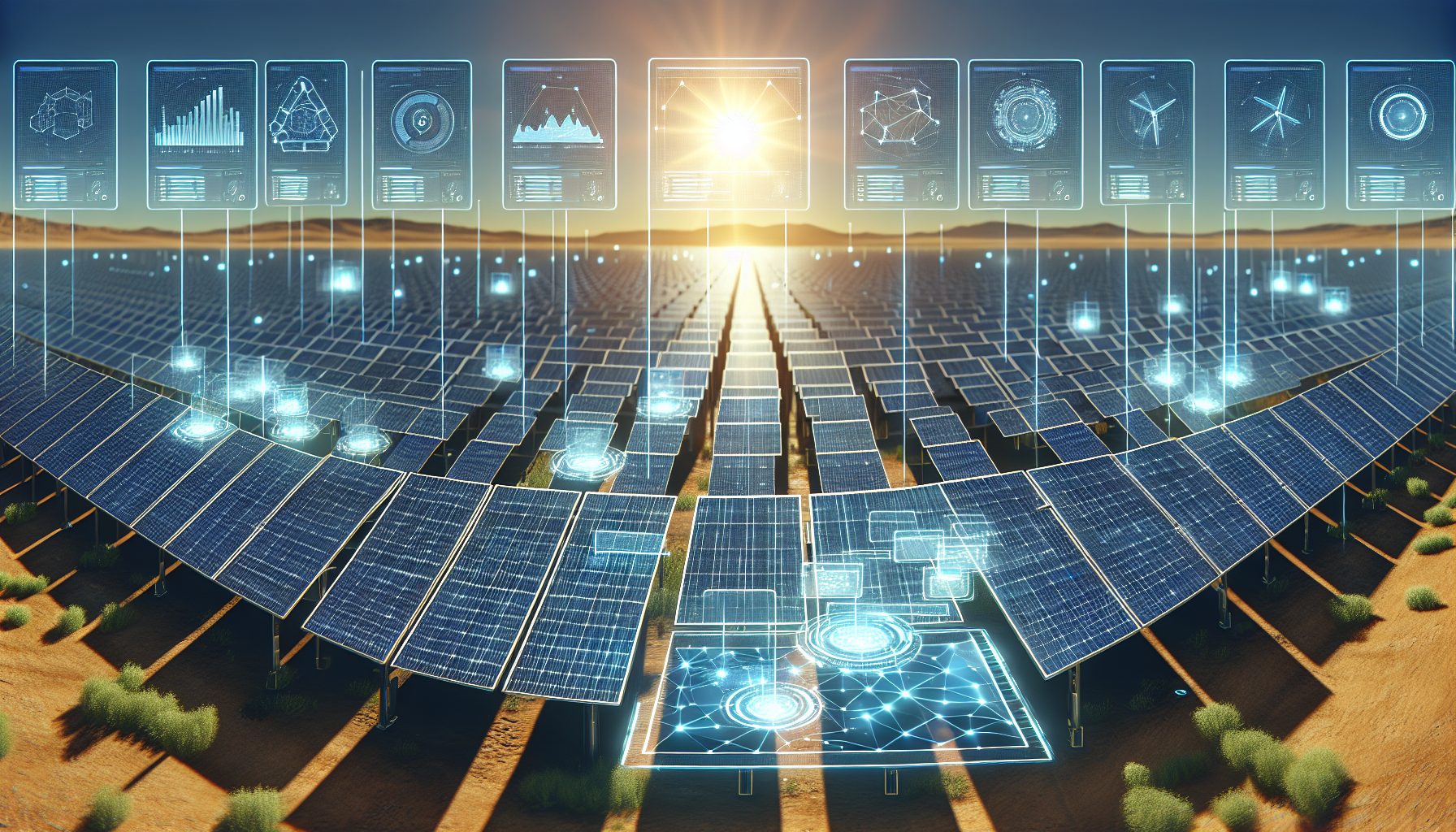
By tracking the performance of individual solar panels, module-level monitoring elevates solar system management. This granular approach allows users to pinpoint underperforming or malfunctioning panels quickly, facilitating timely repairs and maintenance. Equipment like microinverters or DC power optimizers are often used to achieve this level of monitoring, providing detailed insights into each panel’s output.
Cloud-based servers integrate seamlessly with module-level monitoring systems, offering convenient access to performance data and historical trends. This integration enables users to monitor their solar arrays from anywhere and ensures that any issues are identified and addressed promptly, keeping the system running smoothly.
Alerts and Notifications
For maintaining the efficiency of a solar monitoring system, alerts and notifications are of utmost importance. By setting up customizable alerts for system malfunctions, poor performance, or adverse weather conditions, users can stay informed about their system’s status and take immediate action when necessary.
Wi-Fi-enabled systems can send instant alerts, ensuring that any issues are promptly addressed to avoid significant power losses.
Top Solar Monitoring Systems on the Market

A few distinguished solar monitoring systems in the market offer unique features and benefits. Some of the best systems available are:
- Enphase Enlighten
- SolarEdge Monitoring
- SunPower Monitoring
- Sense Energy Monitor
These best solar monitoring systems provide comprehensive solar monitoring solutions to optimize solar panel performance and ensure proper maintenance of your solar equipment.
These systems cater to different needs and preferences, from real-time, module-level monitoring to AI-based home energy consumption tracking. By understanding the strengths and features of each system, solar customers can make informed decisions that best suit their specific requirements.
Enphase Enlighten
Enphase Enlighten is a leading solar monitoring system known for its:
- Real-time, module-level monitoring capabilities
- Detailed analytics for each panel
- Ability to monitor power production rates and historical performance trends
This system is provided by Enphase, a prominent microinverter manufacturer.
Homeowners can access system data through the Enphase MyEnlighten website or the Enlighten Mobile app, making it easy to keep track of their solar installation’s performance from anywhere. This comprehensive monitoring solution ensures that any issues are identified and resolved promptly, maintaining optimal efficiency.
SolarEdge Monitoring
SolarEdge Monitoring provides the following features:
- Individual panel performance monitoring through DC power optimizers
- Real-time data on power production and energy usage patterns
- Seamless integration with SolarEdge inverters via ethernet connection
- Reliable data transmission and remote troubleshooting options
The mySolarEdge app provides additional features such as monitoring solar battery levels and controlling smart devices remotely. It also allows for automated report scheduling through the dedicated web portal. With 25 years of free module-level monitoring, SolarEdge Monitoring is a cost-effective solution for long-term solar system management.
Sense Energy Monitor
The Sense Energy Monitor offers the following features:
- Uses AI to create profiles for identifying and tracking the energy usage of individual appliances throughout the home
- Provides real-time data on energy usage
- Sends energy usage alerts
- Offers historical analysis of energy consumption
- Provides a comprehensive view of both solar production and household energy consumption
Users can access monitoring data through the Sense app for iOS or Android devices and a web-based dashboard. Customers appreciate the simple installation process and the detailed insights provided by the Sense Energy Monitor, making it a popular choice for home energy management.
Connectivity Options for Solar Monitoring Systems
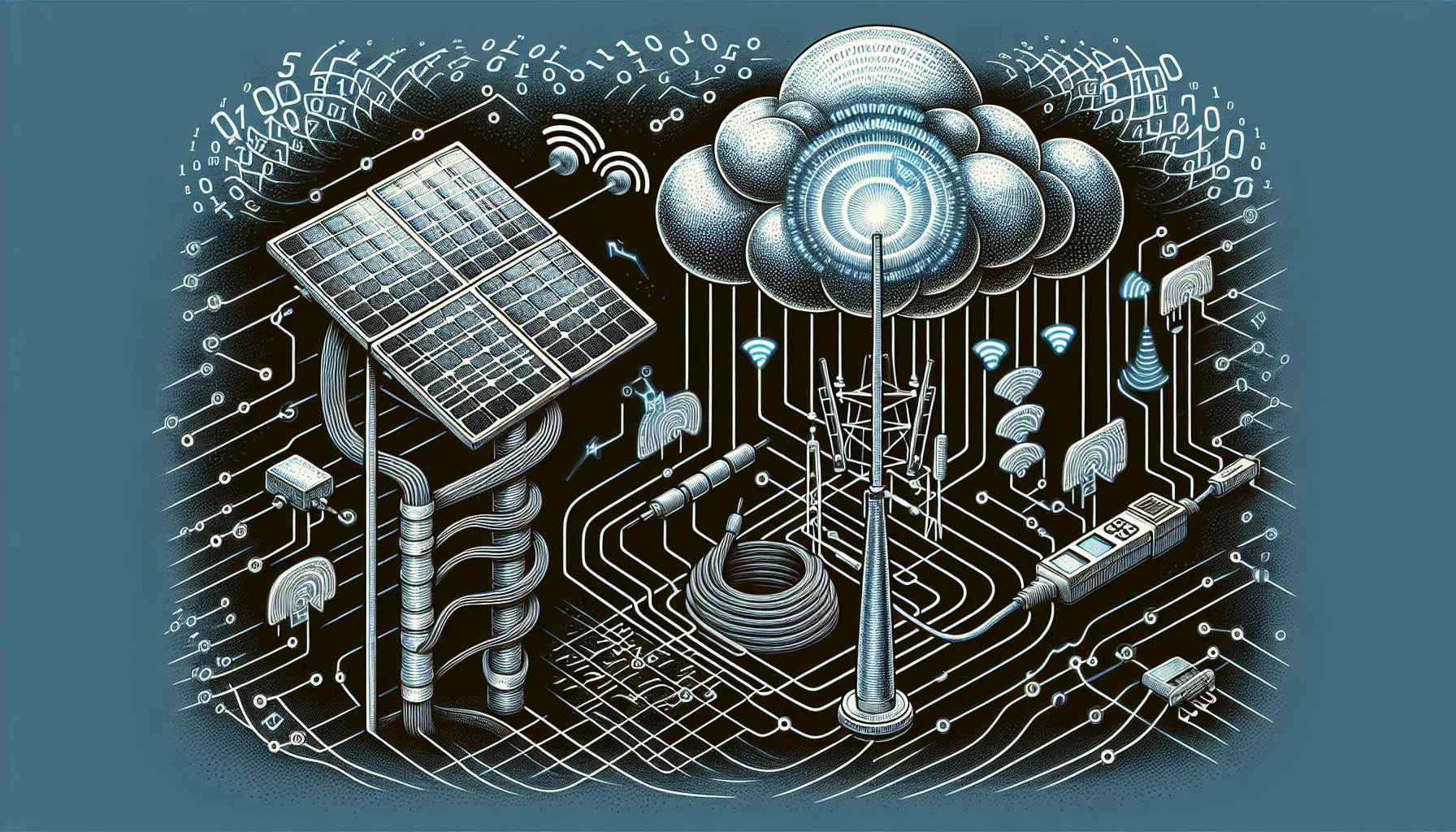
Solar monitoring systems can be connected to the internet through various methods such as hardwiring, Wi-Fi, or cellular networks. Each option has its advantages and considerations, ensuring that users can find a solution that best fits their needs and circumstances.
Whether you prefer the reliability of a wired connection, the convenience of Wi-Fi, or the flexibility of a cellular network, understanding these options will help you make an informed decision about how to connect your solar monitoring system.
Hardwiring
Hardwiring involves using a physical cable, such as Cat5, to connect the solar monitoring device to the internet. This method requires careful planning to ensure that the cable can reach the internet router, considering the installation distance and potential obstacles.
Wi-Fi
Wi-Fi connectivity is often the easiest to set up, provided you have a strong and stable signal. Modern inverters with Wi-Fi capabilities allow for seamless internet connections without the need for physical cables, making the installation process more straightforward.
However, Wi-Fi monitoring systems may face connectivity issues that could require additional costs for on-site service or range extenders. Despite these challenges, Wi-Fi remains a popular choice for its convenience and ease of use.
Cellular Network
Cellular networks provide a reliable solution for remote solar panel monitoring, especially in areas with limited internet access. Setting up cellular connectivity may require a SIM card and a dedicated data plan from a telecom provider, adding to the overall cost.
Nevertheless, cellular modems offer a viable alternative to traditional internet connectivity options, ensuring that your solar monitoring system can function effectively even in remote locations.
Choosing the Right Solar Monitoring System for Your Needs
To choose the right solar monitoring system, consider various factors like compatibility with existing systems, user interface and accessibility, as well as cost and value. By evaluating these aspects, you can ensure that the chosen system meets your specific needs and enhances the performance of your solar array.
From checking compatibility with your current solar panels and inverters to assessing the user interface and long-term value, these considerations will guide you in making an informed decision.
Compatibility with Existing Systems
Ensuring that the monitoring system is compatible with your existing solar panels and inverters is crucial to avoid installation complications. Some systems offer universal compatibility, making them a versatile choice for various solar setups.
User Interface and Accessibility
A user-friendly interface is essential for any solar monitoring system, as it significantly enhances the user experience. The interface should:
- Be intuitive, allowing users to easily access and interpret energy data
- Track production and quickly identify any issues
- Have mobile app availability, ensuring that you can monitor your solar panel performance from anywhere, at any time.
Interactive dashboards are another valuable feature, providing real-time insights and historical data for better analysis. These dashboards can help users understand their energy usage patterns and make informed decisions to optimize their solar power production and consumption.
Cost and Value
When choosing a solar monitoring system, it is important to balance the upfront cost with the ongoing benefits it provides. While systems with higher initial costs might offer more advanced features, these can lead to greater long-term savings by optimizing your solar power production and reducing utility bills.
Consider potential maintenance costs and regular software updates when evaluating the overall value of a monitoring system. Additionally, cellular-based connectivity options might come with subscription fees, so it’s crucial to factor these into your decision-making process.
Ultimately, a well-chosen monitoring system can help you maximize your solar investment and save money in the long run.
Summary
In summary, solar panel monitoring systems are essential for maintaining the efficiency and performance of your solar array. By providing real-time data, module-level monitoring, and alerts, these systems ensure that any issues are promptly identified and addressed, minimizing downtime and maximizing energy production. Whether you opt for Enphase Enlighten, SolarEdge Monitoring, SunPower Monitoring, or Sense Energy Monitor, each system offers unique features and benefits that cater to different needs.
Choosing the right solar monitoring system involves considering compatibility, user interface, and cost. By taking these factors into account, you can make an informed decision that enhances your solar investment and helps you achieve optimal performance and savings. Embrace the power of solar monitoring systems and take control of your energy future.
Frequently Asked Questions
What are the main benefits of using a solar panel monitoring system?
Using a solar panel monitoring system can help maintain system efficiency by providing real-time data on energy production and consumption, detecting issues early, and minimizing downtime.
How do solar monitoring systems work?
Solar monitoring systems work by using sensors and communication devices to collect and transmit data on voltage, current, and power output from each panel to a cloud-based platform for analysis and reporting.
What are the different types of solar monitoring systems available?
There are three main types of solar monitoring systems: manufacturer-integrated, installer-provided, and third-party monitoring systems, each with unique features and compatibility considerations. Choose the one that best suits your specific needs.
What key features should I look for in a solar monitoring system?
When choosing a solar monitoring system, prioritize features like real-time data reporting, module-level monitoring, and alerts for optimal system performance and issue resolution. Having these features in place will help you keep track of your solar system and address any issues promptly.
How do I choose the right solar monitoring system for my needs?
When choosing a solar monitoring system, consider compatibility, user interface, accessibility, cost, and value to find one that meets your specific needs and enhances your solar investment.


